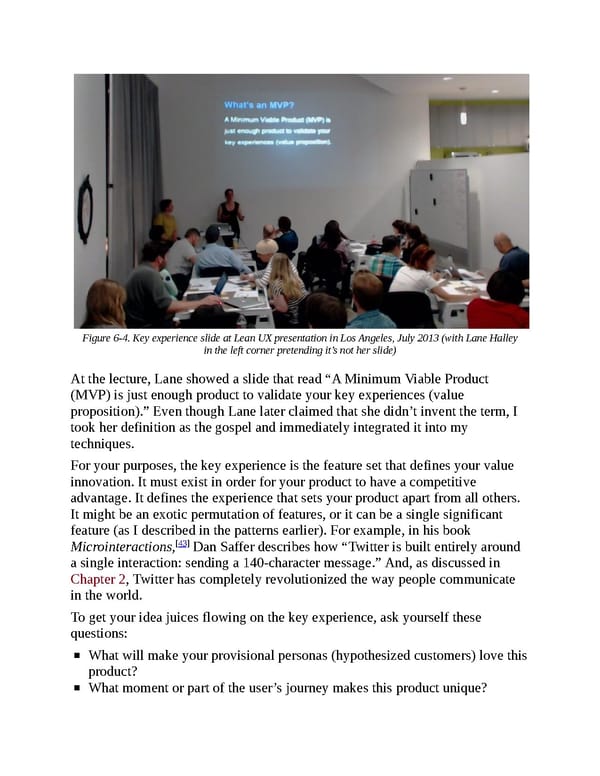Figure 6-4. Key experience slide at Lean UX presentation in Los Angeles, July 2013 (with Lane Halley in the left corner pretending it’s not her slide) At the lecture, Lane showed a slide that read “A Minimum Viable Product (MVP) is just enough product to validate your key experiences (value proposition).” Even though Lane later claimed that she didn’t invent the term, I took her definition as the gospel and immediately integrated it into my techniques. For your purposes, the key experience is the feature set that defines your value innovation. It must exist in order for your product to have a competitive advantage. It defines the experience that sets your product apart from all others. It might be an exotic permutation of features, or it can be a single significant feature (as I described in the patterns earlier). For example, in his book [43] Microinteractions, Dan Saffer describes how “Twitter is built entirely around a single interaction: sending a 140-character message.” And, as discussed in Chapter 2, Twitter has completely revolutionized the way people communicate in the world. To get your idea juices flowing on the key experience, ask yourself these questions: What will make your provisional personas (hypothesized customers) love this product? What moment or part of the user’s journey makes this product unique?
 UX Strategy: How to Devise Innovative Digital Products that People Want Page 148 Page 150
UX Strategy: How to Devise Innovative Digital Products that People Want Page 148 Page 150